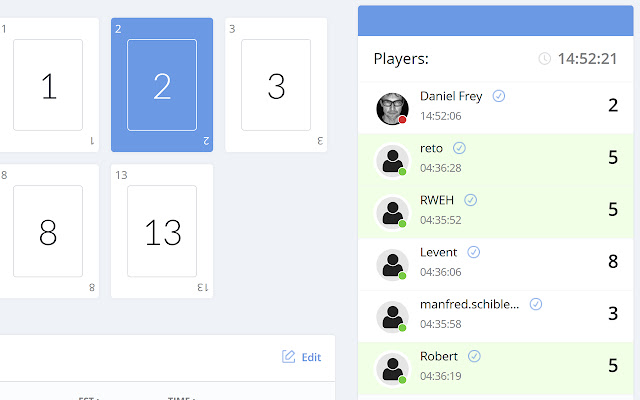Description from extension meta
Detects multi-modality in a series of numbers!
Image from store

Description from store
Background
In a typical planning poker, i.e. for software development (to typically estimate the complexity of a ticket), estimates may differ between estimators. When do we need to discuss the different estimates, when don't we? One approach ist to detect multi-modality of the estimation distribution.
Example
A team estimates using typical scrum fibonacci numbers [0, 1, 2, 3, 5, 8, 13, 20, 40, 100]. And let's say, we have the following estimates after the first round: [1, 5, 5, 8, 3, 5]. Is this worth a discussion? I.e. is it uni- or multi-modal? The distribution (abundance) of the estimated fibonacci numbers looks like this: [0, 1, 0, 1, 3, 1, 0, 0, 0, 0]. This contains 2 local extrema which corresponds to a bi-modality. Discussion is worth between the two people having estimated a 1 and an 8, the lowest and the highest estimates.
Features
I distinguish two cases:
* Uni-modal distribution: I mark the median with a green background.
* Multi-modal distribution: I colorize the peaks of the distribution (those values which are most abundant) with a light red background color and extrema to discuss with a darker right background.
What is currently supported?
I currently support plannings at https://www.planitpoker.com with the default scrum fibonacci numbers as mentioned above in the example.
Version 1.2020.0330.2333:
- Adjusted the logic and tested thoroughly
Version 1.0
- Bugy version where the logic is broken
